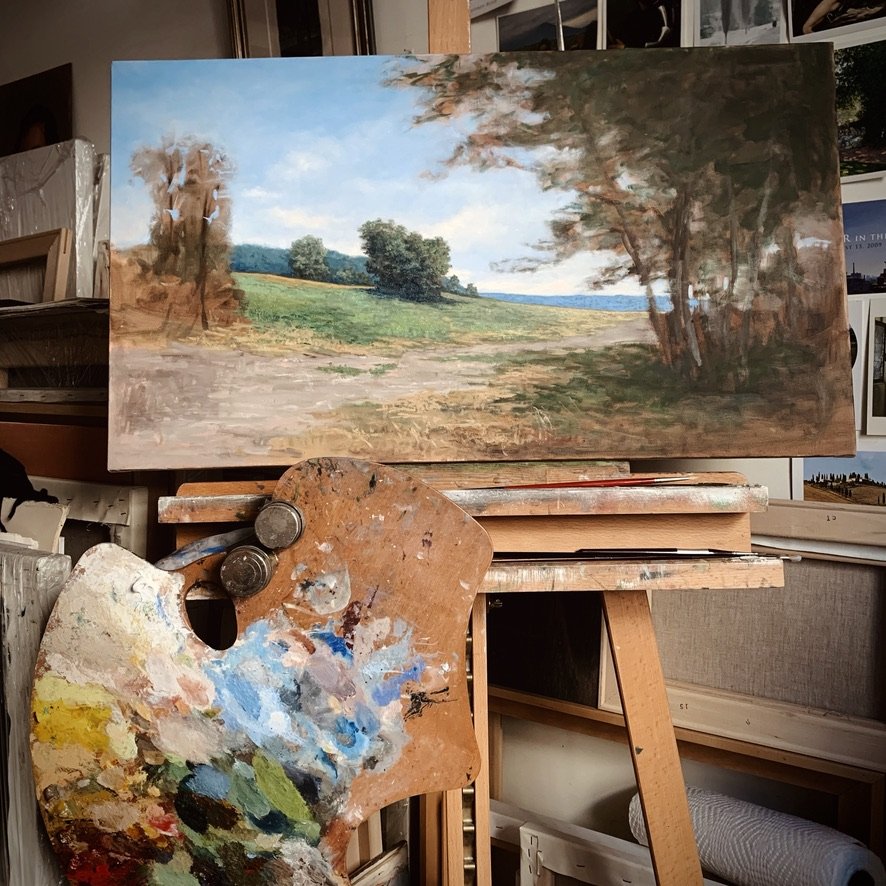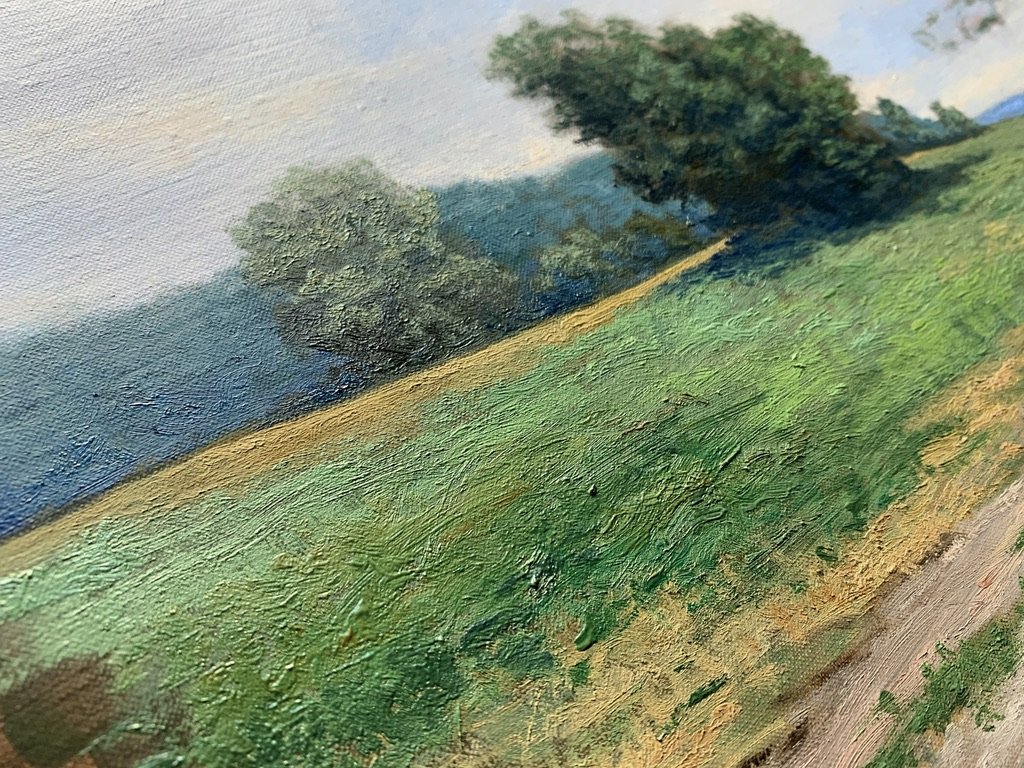Trajectory of a Painting - Part 2
As work continued and I moved on to pass number four, or the fourth sitting, there is not much to be said about this stage only that I keep moving forward to find the right color and atmosphere for this landscape. I kept asking myself while I painted, where is this place Where is this path leading to and who is walking there? Is it me, or will a figure make an appearance?
I had been thinking of perhaps including a runner seen from behind running through the landscape, but as I thought about it maybe that might be a little cheesy. So I dropped the idea. As the painting continued, I scrutinized all the elements of it, mostly the composition. For that moment the painting has a good start but something was missing and I was not sure what.
As I figured things out I kept building the paint, adjusting colors, shapes, and having fun while pushing pigment around. It had been a long time since I had worked on a painting, especially one larger than 11 x 15 inches. This linen canvas is 16 x 28 inches, not my biggest painting to date, but it is more narrow than what I’m used to. Also this is my first large oil painting from imagination, so the pressure was on not to mess up and waste a beautiful piece of linen. Around that time I had to covered up an old unfinished painting because I didn’t think there was any hope for it. Seeing so many hours of work gone just like that hurts, but in the end I don’t want any bad work of mine floating around, so you either cover it or tear it up. I was not going to let that happen to this painting.
What kept me going was the experience of using new paint. Working with Rublev oil colors was an amazing change. The paint is ropier and leaves beautiful brush strokes when laid down. I didn’t have to try hard to get a nice surface, the paint was doing it all on its own and I could not be happier with the results.
Moving on to the fifth pass things started to take shape, figuratively and literally. This painting came to life during a strange moment in time when we were living under a lot of social restrictions, and travel had come to a halt. During the previous months I kept thinking back on my trips to Tuscany and Provence, wishing to get another chance to return. Slowly, Italy crept into this painting with the addition of cypress trees in the middleground. Their appearance came effortlessly as my brush took on their shape as I dragged it down the surface of the linen.
At this point things start feeling good, and I was on a roll. I was loving the texture I was getting with each stroke, and my approach to painting all of the sudden felt new. After years of drawing, and allowing my pen scribbles to build to something significant on paper, my wrist and hand was now allowing me to experience freedom with my brush. I began imitating my pen strokes with my brush, and let the marks layer on top of one another. I could see that if I continued in this direction I would get to see something magical in the paint, a feeling I had not experienced in a very long time.
As I moved to the foreground of the painting things started to click. I found a new me in the paint, I was becoming looser and more fearless with paint handling. As I pushed the pigment and oil around all I could think about was Monet and his insanely mesmerizing paint surface. James Elkins puts it well in his book What Painting Is: “In Monet…part of the object is to work until it is no longer possible to tell what paint is on top and what is underneath. When that happens, it is a magical moment because the painting suddenly stops looking like a flat color-by-number with a few added touches, and takes on a rich and confusing aspect. The meadow is no longer a green card scattered with cutout plants, but a rich loam matted with plant life and moving with living shadows. Monet’s texture strokes help that happen by raising glints of light that sparkle randomly among the painted stalks and leaves, confusing the eye and mimicking the hopeless chaos of an actual field.”
With that in mind, I continued piling the paint in every direction, applying wet into wet, or semi wet on top of dry. Strokes began to break, paint was grabbing on forming random patterns. Soon chaos and harmony were cohabitating in my painting.







